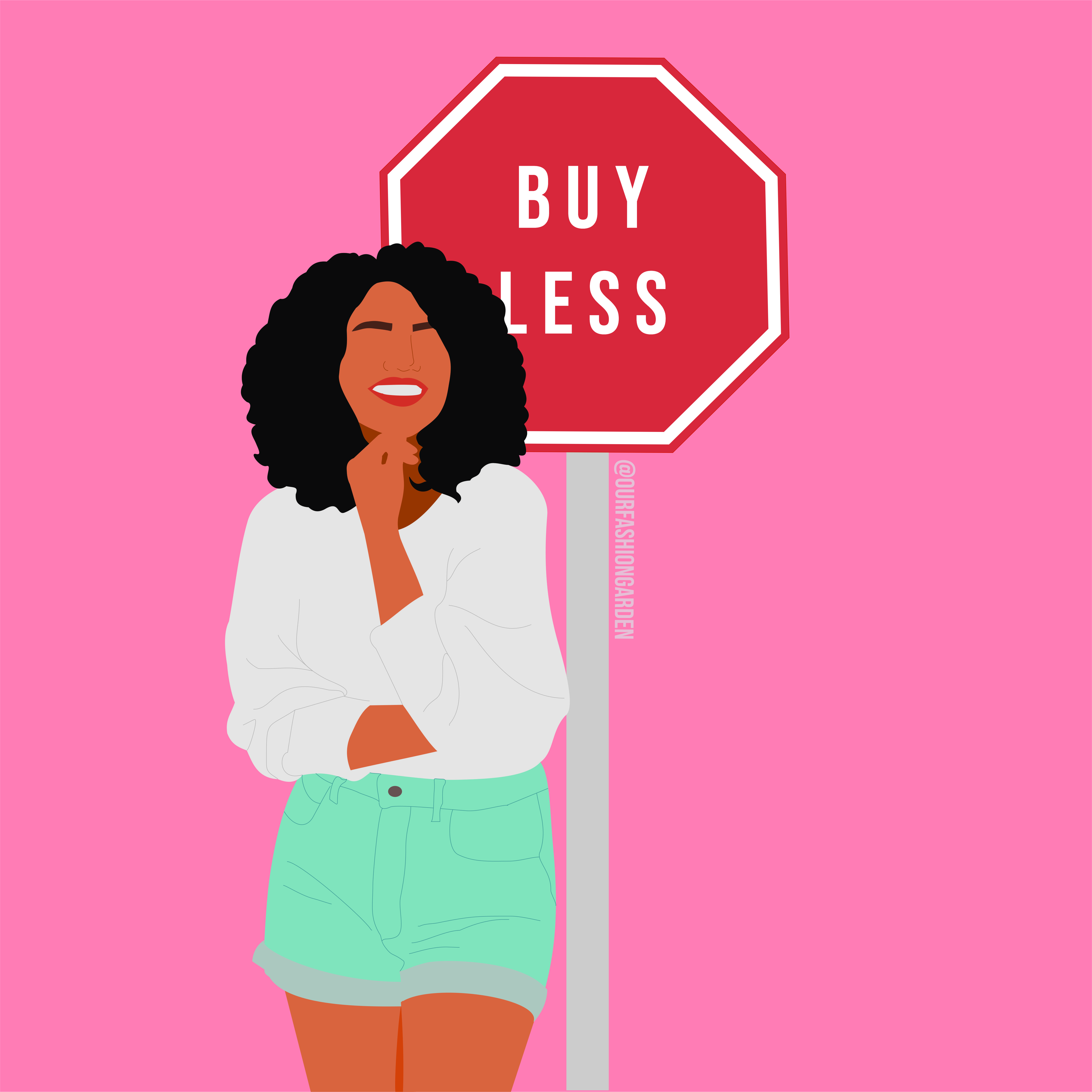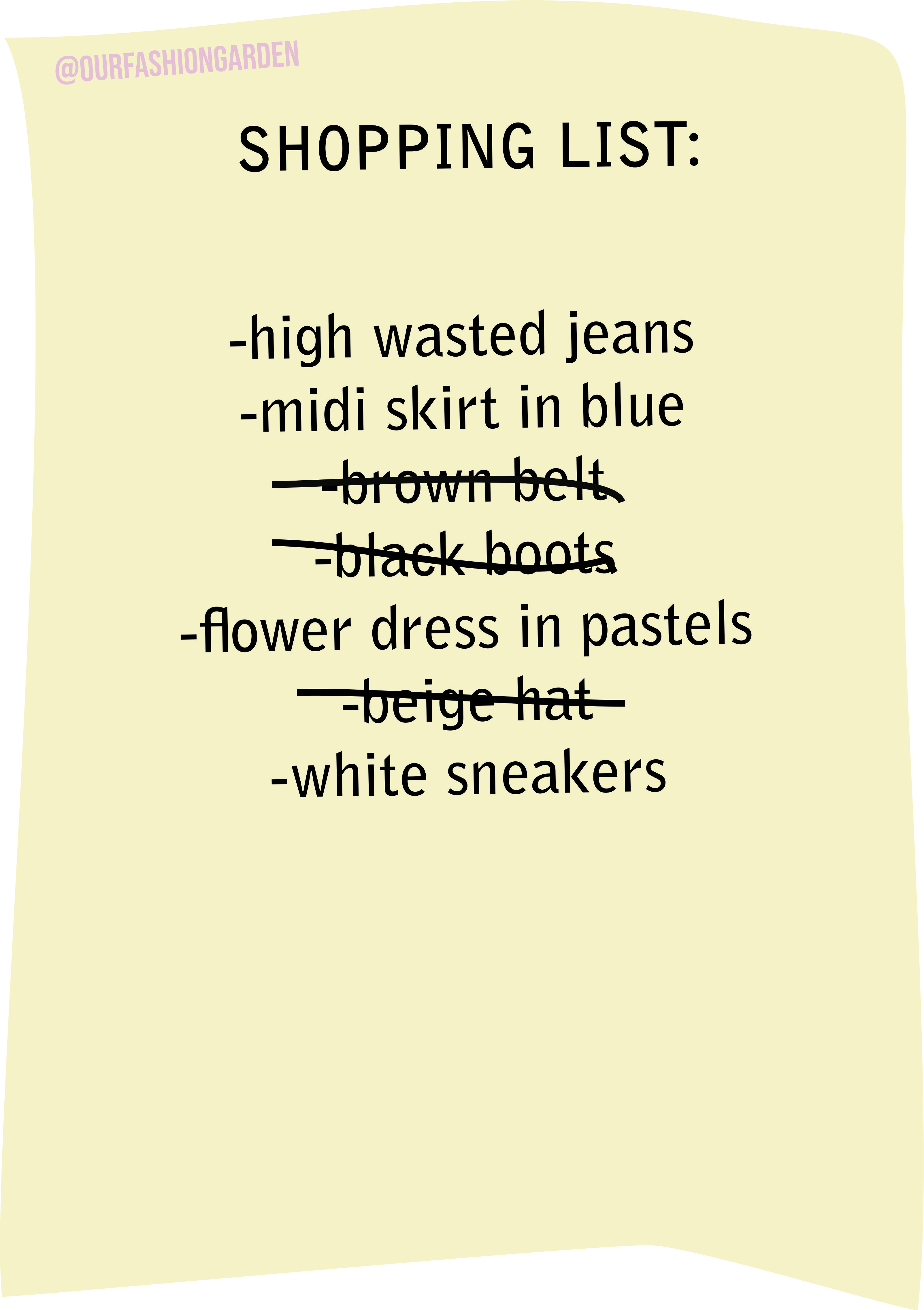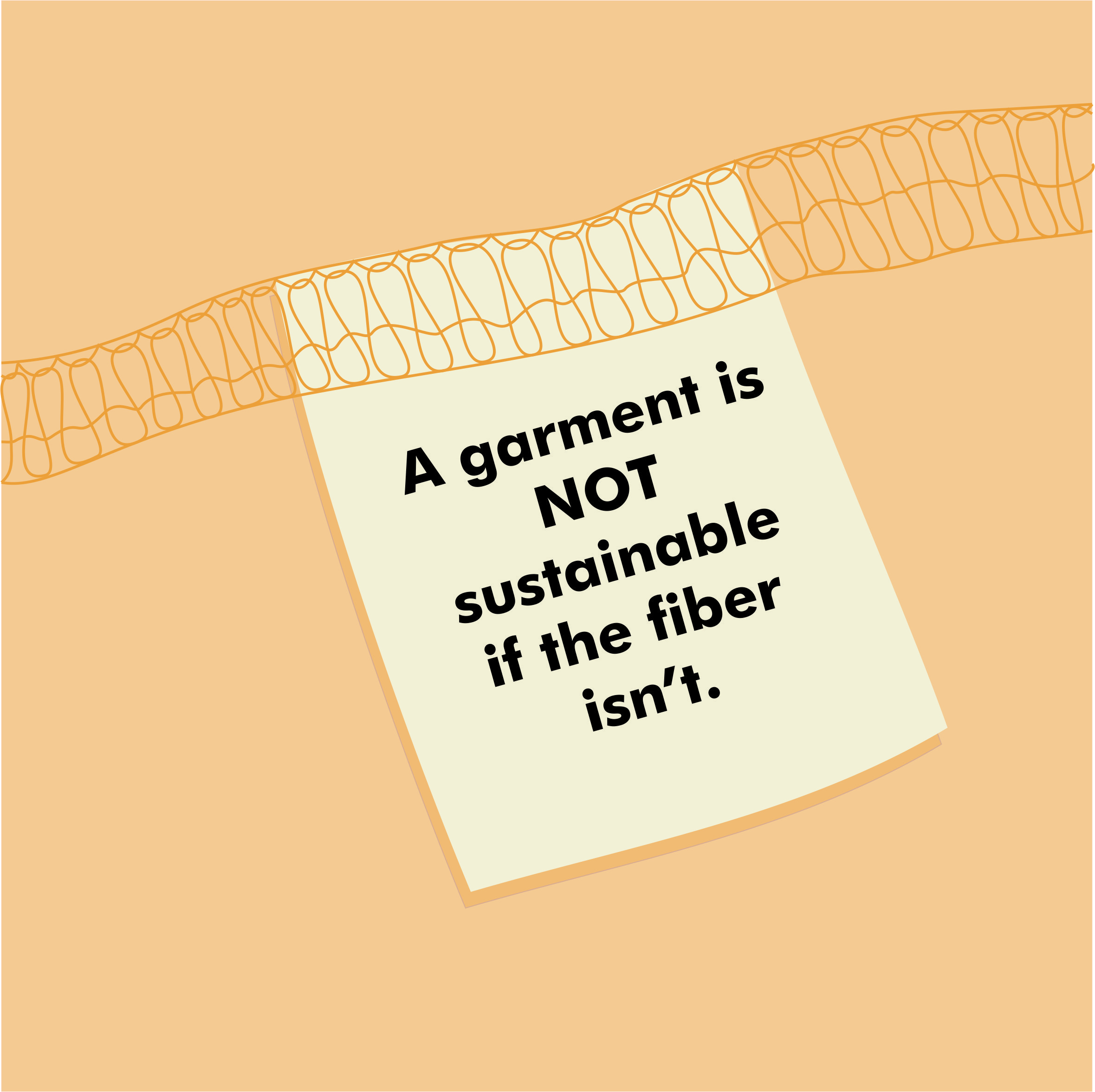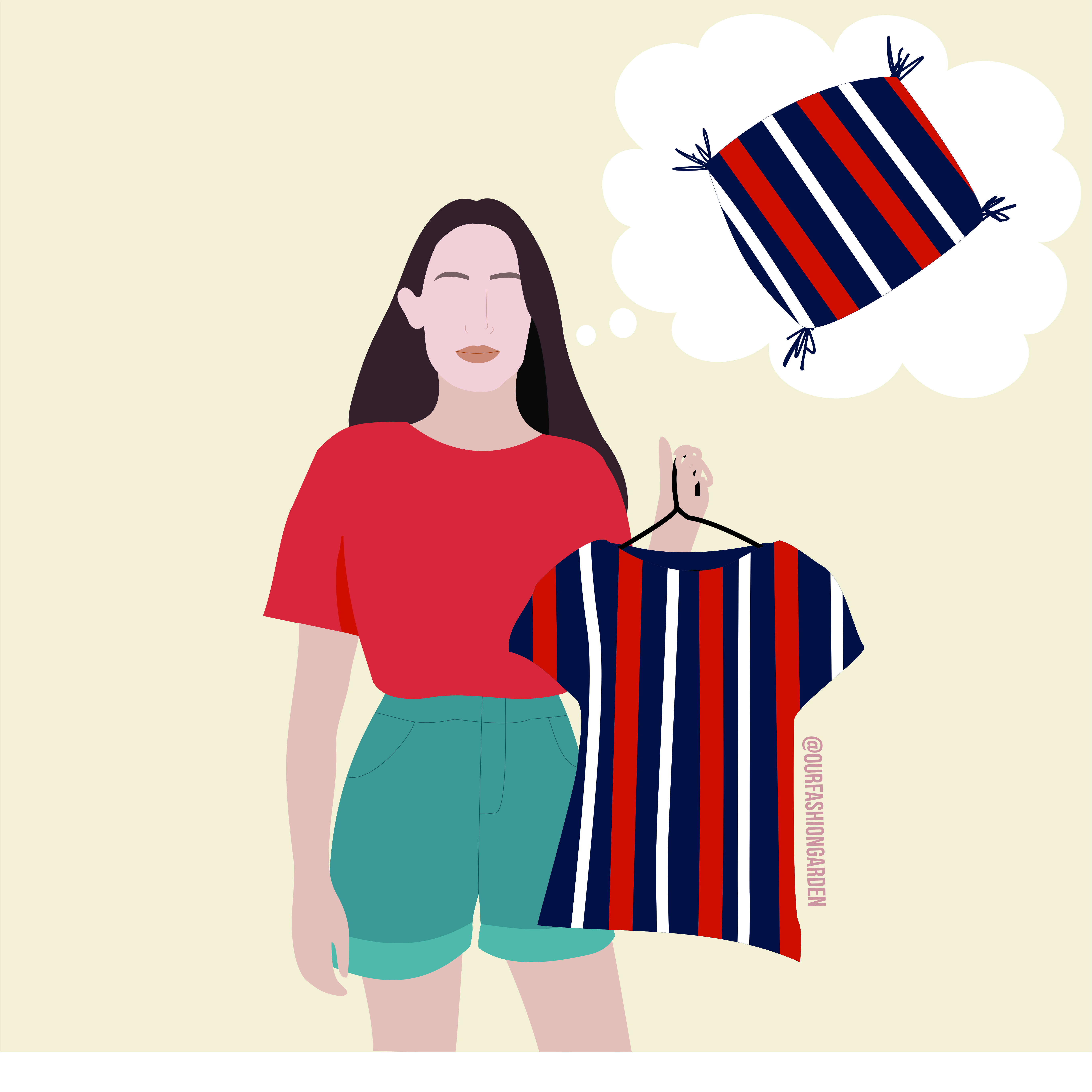I know, I know… Fast fashion and sustainability can’t go together. However, we know buying from sustainable brands is a privilege and many people seem to have fast fashion as their only option. Don’t worry, we’ll teach you here how to reduce your carbon footprint whenever you want to buy clothes.
Since we published our post on Instagram of 5 ways to get inexpensive sustainable fashion, we noticed you wanted to know more about this topic. So, here you have it!
Okay, first of all, fast fashion is not and will never be sustainable. Nevertheless, we as consumers can change our consumption into a more sustainable one. While there are other inexpensive ways to avoid completely fast fashion — like thrifting or exchanging clothes with friends— those options won’t offer us new garments.
I don’t think there’s something wrong with wearing preloved items, but I’m here to teach you how to be more responsible when you go shopping the next time.
1. REDUCE YOUR CONSUMPTION

Let’s face it, we don’t need to go shopping every month. We don’t need new clothes all the time. This is the first and main problem we face when it comes to consuming fashion. We overconsume, it’s crazy!
Cheap prices let us buy a lot for less, and because of that, we find ourselves buying every month just because it’s affordable. It isn’t just an environmental or social problem, it can also affect our economy. We spend a lot of money on it when really, there’s no need to. This can even become an addiction.
I can’t tell you when to shop, that’s really up to you. But I know you don’t need 3 new dresses per month. And no, I don’t mean you will have like 1 in your closet forever and you will look the same all the time. I’m saying you already own enough, and it’s fine if you want to buy new clothes, just do it every now and then.
I probably buy clothes every 6 months and buy 2 garments, this works well for me, based on my lifestyle. Do what works for you, just keep the excesses away.
Quick Tips!
- Schedule your shopping! Commit to only buying clothes in certain months or dates. Other days are discarded. This will save you a lot of time and money, trust me.

-
- In the meantime, make a list of the items you’re looking for. That way, the next time you go shopping you will know exactly what you’re looking for.
* If you regret adding something you can always remove it from your list. This way you avoid impulsive purchases.

Let’s start now with the shopping tips…
2. Only consider items you LOVE.

Exclude the rest. You must love that item, you should look at it and feel like it expresses who you are. If you just happen to like it or think it’s okay for its price, then don’t buy it.
If you can try it on, then do it. If you can’t and for some reason, you’re not sure if it will fit you or look good on you, move on. Don’t purchase it.
Once you love it, it passed the first round… let’s move on to the second one!
3. How much will I use it?

Now that you’ve got an item that you absolutely love, it’s time to consider this:
-Is it something that matches what you already own?
-Does the quality of the product feels like it will last, or does it feels cheap?
-Is it something you can see yourself wearing for at least the next 5 years? If you don’t, then you know the answer.
Think about all the outfits you can make with it, if there are at least more than 3, keep it for the next round. Less than 3 is too little and it means it’s probably too trendy and isn’t really your style.
In case you are seriously thinking of changing your look, then it’s okay to buy it. But then start purchasing pieces that match it.
Please consider the quality, because it will give you an idea of how long your garment will last.
4. Check out the fibers!

THIS IS A BIG DEAL. Fast fashion works with a lot of plastic fibers, and other terrible fibers that harm the environment terribly. You can read our Sustainable Fiber Guide to know what fibers to absolutely avoid and which ones to look for.
As we can’t be sure that the working conditions of the people who make the clothes are fair, this is the least we can do. This is for the environment, this is for you.
Let me explain why fibers are so important. Whenever we purchase a garment, we’re telling the brand we want more of it. It’s like voting, somehow you’re saying you like it so the brand will continue making more of it.
Fast fashion brands don’t really care about people or the environment, they care about making money. That’s all they want, and they do it by listening to their clients. If clients buy polyester, they’ll make more polyester garments. If they want organic cotton, they’ll search for a way to give it to them.
This is why greenwashing exists because fast fashion brands can’t actually make that happen. How could they produce tons of clothing with sustainable materials? Their prices would rise and there are not enough resources to do that, at least not will all sustainable fibers. So, they just pretend to be green, when they’re not.
However, there are sustainable fibers that can be used by fast fashion companies, that actually make sense with the huge amount of clothing they produce:
-Tencel/ Lyocell
-Bamboo
-Recycled cotton
-Recycled polyester
-Recycled Nylon
If they offer other sustainable materials, chances are they want to fool you. Avoid fibers like organic cotton. Trust me, you won’t find an organic cotton t-shirt for less than $20.
There could be a scenario where you can’t find a sustainable fiber and you’re stuck between cotton or polyester —Or any natural non-sustainable fiber and a plastic fiber— My advice is to choose the natural ones, they are biodegradable after all. Just try to avoid plastic fibers if they’re not recycled.
So, if you love the item, you can see yourself wearing it a lot and it has a sustainable fiber, we just have one question left to ask ourselves:
5. How will I throw away this garment?

It’s important to start training ourselves to think this way. Most of the time we just see something pretty and buy it, we use it and that’s it. Our trash won’t magically disappear, we need to have a plan or at least a couple of ideas.
Examples:
-
- If it’s a natural fiber you can compost it.
- If it’s a recycled plastic fiber: eco-brick, pillow filling, DIY, donate, sell. Anything but the trash.
- There are brands that receive used garments of their brand to recycle them. Research the brand you’re purchasing from and see if they offer that service.
Once done, if the garment you love passes all the phases, feel free to buy it. No shame on it, you did your work as a consumer after all.
6. Take care of your garment.

You want your new garments to last a while. Yes, fast fashion can last up to 5 years if you take good care of it. So, please read the care instructions and follow them.
When we take care of our garments we save a lot of money, because we don’t need to buy a new one soon. Try to make them last as long as possible, here we have 8 ways to make your used clothes look brand new, check it out to help the life our your clothes last longer!
This is the way to consume fast fashion as a responsible consumer. We know it takes time, but it’s another option if this is what you can afford. You’ll save money this way because you will end up buying less.
Also, if you decrease your consumption and you save the money you used for fast fashion every month, you can even afford to buy from a sustainable fashion brand. Cool, right?
Honestly, I recommend you avoid fast fashion. So, if you can afford sustainable fashion purchase from those brands instead, even if it’s more expensive.
I hope this was useful! Keep in mind is not a permanent solution to make our way to sustainability, but works for now.
-All the love, Lucy.
BECOME AN OFFICIAL MEMBER OF OUR CLUB!
We would love you to be part of our community. There are freebies, giveaways, weekly tutorials, discounts, and other secrets we only share with our insiders!



[…] AVOID FAST FASHION unless you have no other options, then this article about how to sustainably buy fast fashion will help […]